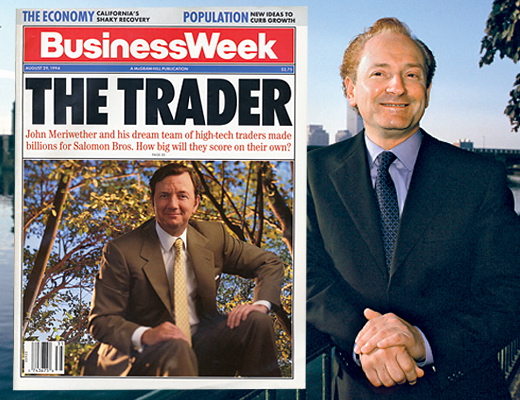Long-Term Capital Management (LTCM) is a hedge fund management firm based in Greenwich, Connecticut. The hedge fund used absolute-return trading strategies combined with high financial leverage. The firm’s master hedge fund, Long-Term Capital Portfolio L.P., collapsed in the late 1990s, leading to an agreement on September 23, 1998, among 16 major financial institutions worldwide. Some of the names are included such as Bankers Trust, Barclays, Bear Stearns, Chase Manhattan Bank, Credit Agricole, Credit Suisse First Boston, Deutsche Bank, Goldman Sachs, JP Morgan, Lehman Brothers, Merrill Lynch, Morgan Stanley, Paribas, Salomon Smith Barney, Societe Generale, and UBS for a $3.6 billion recapitalization (bailout) under the supervision of the Federal Reserve.

LTCM was founded in 1994 by the former vice-chairman and head of bond trading at Salomon Brothers, John W. Meriwether. Members of LTCM’s board of directors are among prestigious individuals in the economy included Myron S. Scholes and Robert C. Merton, who shared the 1997 Nobel Memorial Prize in Economic Sciences for a “new method to determine the value of derivatives”. In its first year, initially successful with annualized return of over 21% (after fees), it continues with 43% in the second year and 41% in the third year. It lost $4.6 billion in less than four months following the 1997 Asian financial crisis and Russian financial crisis in 1998, requiring financial intervention by the Federal Reserve, with the fund liquidating and dissolving in early 2000.
Long-Term Capital Management (LTCM) was one of the largest hedge funds with over $100 billion assets under management back in the mid-1990s. It reached that size thanks to the aggressive tactics of its investment managers. LTCM used complex mathematical trading models to take advantage of fixed income arbitrage deals called convergence trades. This occurred usually with U.S., Japanese, and European government bonds. Since government bonds are a “fixed-term debt obligation”, differences in the bonds’ present value are minimal, so according to economic theory, any difference in price will be eliminated by arbitrage.
However, small inconsistencies arose between the two bonds because of a difference in liquidity. By a series of financial transactions, essentially amounting to buying the cheaper bond and shorting the more expensive, but more liquid, 30-year bond just issued by the Treasury, it would be possible to make a profit as the difference in the value of the bonds narrowed when a new bond was issued. Because these differences in value were fractions of a percent (especially for the convergence trades) the fund needed to take highly-leveraged positions to make a significant profit. The hedge fund had equity of $4 billion and had borrowed over $125 billion with assets of around $129 billion, for an enormous debt-to-equity ratio of over 25:1.
Like many hedge funds, LTCM’s investment strategies were based upon hedging against a fairly regular range of volatility in foreign currencies and bonds. Due to its highly leveraged nature and a financial crisis in Russia in August 1998 (i.e. the default of government bonds) which led to a flight to quality, the fund sustained massive losses and was in danger of defaulting on its loans. This made it difficult for the fund to cut its losses in its positions. The fund held huge positions in the market, totaling roughly 5% of the total global fixed-income market. LTCM had borrowed massive amounts of money to finance its leveraged trades. LTCM had no choice but to liquidate a number of its positions at a highly unfavorable moment and suffer further losses.
This enormous hedge fund, which was providing annual returns in excess of 40% up to this point, experienced a flight-to-liquidity. In the first three weeks of September, LTCM’s equity tumbled from $2.3 billion at the start of the month to just $400 million by September 25, 1997.
LTCM had no options left other than seeking a bailout from the Federal Reserve. The Federal Reserve Bank of New York organized a bailout of $3.625 billion by the major creditors to avoid a wider collapse in the financial markets. The total losses were found to be $4.6 billion.
After the Federal Reserve bailed LTCM out, the company continued operations. In the year following the bailout, it earned a modest 10% compared to the staggering 40%+ returns in years past. By early 2000, the fund had been liquidated, and the participating banks that financed the bailout had been paid back, but the collapse was devastating for many involved.
The LTCM crisis was caused by not just miscalculation but also pride. LTCM was a collection of highly talented, highly skilled, and highly accomplished people. Nevertheless, the firm imploded in financial ruin and almost took the global economy down with it. At its core, LTCM held the mistaken belief that volatility and risk are the same things. But the LTCM case demonstrates unmistakably that volatility and risk are two different things. LTCM managers took client capital and levered it vastly with debt and derivatives, leaving absolutely no room for even the smallest mistake. In fact, the firm’s principals had each put virtually their entire life savings into the funds, demonstrating that they all believed wholeheartedly in their firm. Consequently, LTCM’s disaster decimated not only its clients’ wealth but also its principals’ wealth.






